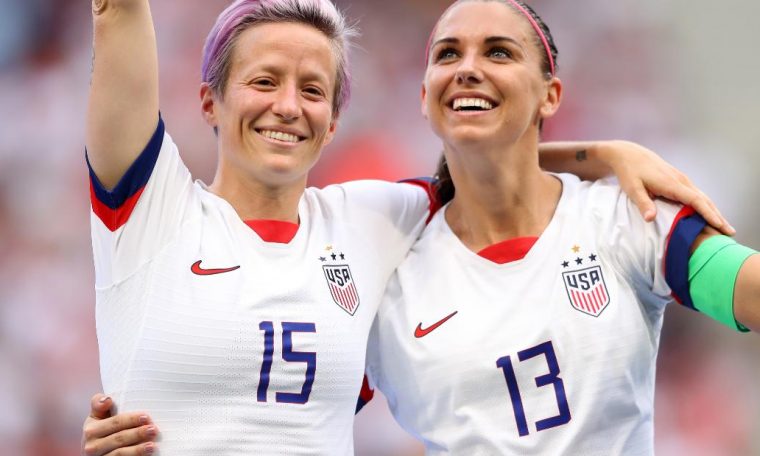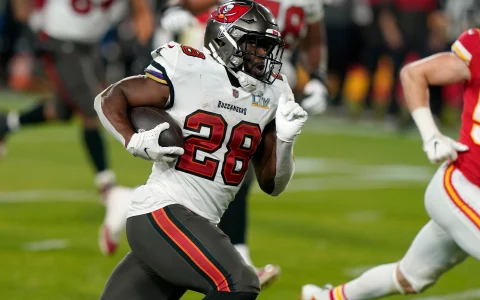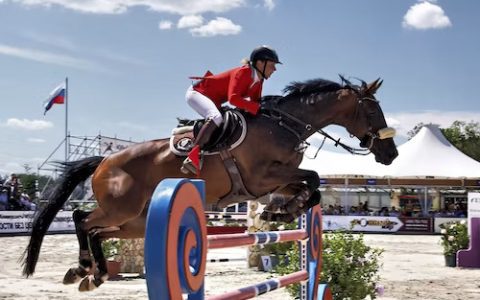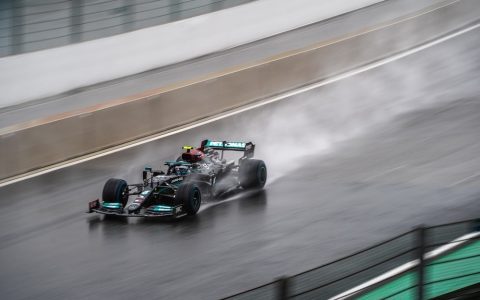
Told on the day it was announced to the rest of the world, she and her teammates were given 15 minutes to come to terms with the news before a statement was made public.
But Young’s story has a happier ending. Four weeks after the initial decision, AFC Fylde reversed course and next season, whenever that may be, the women’s team will continue to play in the National League Northern Premier Division.
“A lot has changed,” explains Young who, as part of the restructure, will become joint-manager, alongside Kim Turner.
“The club is picking up the basic finances, in terms of league fees, training facilities, but there’s no funding for expenses. We’re trying to do some fundraising; we’re looking for sponsorships and we’re hoping we can make up that money elsewhere.
“There is a light at the end of the tunnel. The backlash at what happened to us, and we’re at tier three, has been an eye opener. This game has come on so much in the past 10 years.”
Uncertainty is not new to women’s football and neither is inequity. It is those most at peril who are always most exposed. And France 2019 was never perfect.
As each country’s experience of Covid-19 has differed, so too has the response and the speed at which a return to some semblance of normalcy is attempted. It is, after all, at first a public health issue.
Fritz Keller, President of the German Football Association (DFB), said by resuming the season the Frauen Bundesliga was “taking on a pioneering role in international women’s football.”
Both talk of their angst at returning and of how the clubs’ management of their health and well-being eased initial concerns.
“This [the resumption of the Frauen Bundesliga] is going to do huge things for women’s football in Germany, but it’s also going to do huge things for women’s football in general,” Barrett tells CNN Sport.
“It just shows there’s an intent there. If we want women’s football to be taken seriously, we need to take it seriously.”
Players have been regularly tested and were gradually reintroduced to contact training. “We weren’t allowed to touch any of the equipment; everything was sterilized,” says Barrett of FC Koln’s first 10 days of training while socially distancing.
There were oddities, Barrett admits, as the team was split into four dressing rooms on matchday, substitutes had to socially distance and no embracing was allowed during goal celebrations in a match which three-time defending champion Wolfsburg won 4-0.
Disconcerted by how the players’ voices were amplified by the absence of fans, Dickenmann watched the game unfold from the substitutes’ bench. The return of the league is a positive for her and her teammates, the Swiss says, but there are concerns for teams which aren’t as well funded as the league’s top two teams, Wolfsburg and Bayern Munich.
“The gap between the best teams and the last-place teams has got even bigger and we have a lot of games,” Dickenmann explains. Thirty-eight matches will be played in the Frauen Bundesliga in four weeks, with the season ending on June 28.
“We have a big squad, but other teams don’t have that luxury and, for them, it’s going to be hard to get through these weeks without injuries.”
Charlie Dobres is the marketing director of Lewes FC, a fan-owned English club which says it is the first and only gender equal club in the world. Planning for football’s resumption in England is ongoing, he says, and the club is working on the presumption that Lewes’ men’s and women’s teams will be playing behind closed doors when the next season starts.
Over the last two seasons, attendances for women’s games at Lewes had quadrupled to an average of around 600 a match.
But though Dobres admits he’s extremely worried about the future of the women’s game, he also regards this crisis as an opportunity and has called for next season’s matches in English football’s top two women’s divisions to be broadcast live on television. The Frauen Bundesliga, for example, is being broadcast free-to-air in the UK and is also being shown in Scandinavia and Mexico.
“Instead of Covid-19 being an extinction-level event, it could actually be an incredible gateway into a whole new step change to women’s football,” he tells CNN Sport.
“If you have those venues in place, and the broadcasting structure in place, and there’s no crowds, then the argument says simply if you’re going to show a men’s match in X,Y or Z venue at three o’clock and use exactly the same infrastructure, protocols and the same everything, crucially with the same available audience, then play women’s matches as well on the same day.
“This opens the door for bigger broadcasting deals for women’s football going forward and the other crucial factor [is], since there’s no live sport you can attend, you have a captive audience at home.”
“Our sense is that given all the massive publicity and the backing of the Premier League, we’re not hearing yet in those discussions exactly the same urgency to also start top women’s football and that’s interesting. It’s depressing and interesting, and also incredibly easy to change,” says Dobres.
“All of this is a choice and it’s really a choice of the people who hold the power. That isn’t us; they aren’t clubs or individual players. They are the authorities, be that FIFA, the FA, government, etc., and, to some extent, the choice is also held by the big commercial players in the football space, the broadcasters for example. We want to influence that decision.
“We’re really afraid it might not happen. There’s definitely a world, if you go by past behaviors, the most likely outcome is that women’s football will be diminished by this crisis and women’s football will be set back.
“The next few months are a test of vision. They’re a test of how big their vision is. If you believe that football should have absolute equity and that’s your starting point, then all your actions and decisions flow from that.”
Following the 2019 World Cup, FIFA promised to double its investment into women’s football over the next four years to $1 billion and earlier this year it said it had distributed nearly $8.5 million in solidarity funding to both professional and grassroots clubs for players that played at last year’s World Cup.
in a statement to CNN, Sarai Bareman, FIFA’s Chief Women’s Football Officer, said the governing body had “undertaken an extensive process of stakeholder consultation to gather information on the impacts the virus has had at all levels of the women’s game.”
She added: “As football gradually returns to play, we must work collectively with our members and all football stakeholders to ensure that the momentum for the women’s game is not lost.
“Collectively, we have the ability to ensure that the level of growth and momentum is maintained, and even increased, as football clubs in many countries begin to reopen their playing fields once again to players and staff.”
Spain is the other major European powerhouse to call time on its top women’s league this season. For La Liga Iberdrola, this was the first season it had sold its TV rights.
That is a lot of money for women’s teams to lose. But, just as the La Liga Iberdrola has studied the National Women’s Soccer League in the US for strategies on how to build its brand — and successfully so as a world record attendance of 60,739 was recorded for a women’s club match last year as Atletico Madrid hosted Barcelona — so, too, it and other leagues could learn from the NWSL on how to adapt in the current climate.
Last month the NWSL announced that a 25-game tournament, the 2020 NWSL Challenge Cup, would be played in Utah from June 27, which will make it the first US sports league to return to action.
“We have an exciting format and [having] the best players on the planet in our league gives us a chance to play off that momentum, maybe not in the way we thought we would, but in a good way.”
Tournament costs are covered through sponsorship and TV deals — CBS All Access will show the games, which will also be made available worldwide via Twitch. Dell Loy Hansen, owner of Utah Royals FC, will provide accommodation and training facilities for the league’s nine teams
“We’re seeing so much flexibility and innovation that we’ve never seen in sports … that’s a massive opportunity for women’s sport, to be on the same page, on the same table when all this replanning and different ideas are coming up,” she tells CNN Sport.
“The last few weeks has shown that women’s sport is being really challenged and there’s a danger that that opportunity is potentially going to be missed. It’s important the next few weeks, the major governing bodies, the major leagues, clubs, to look at women’s sport and where it fits in all of this.
“It should be an opportunity for women’s sport to come out better, come out on some more equal footing, but now the reality is there’s a massive challenge that women’s sport might go backwards, might be left out from the table.
“It’s a major inflection point as to what’s going to come out of this and where do we stand in women’s sport.”



